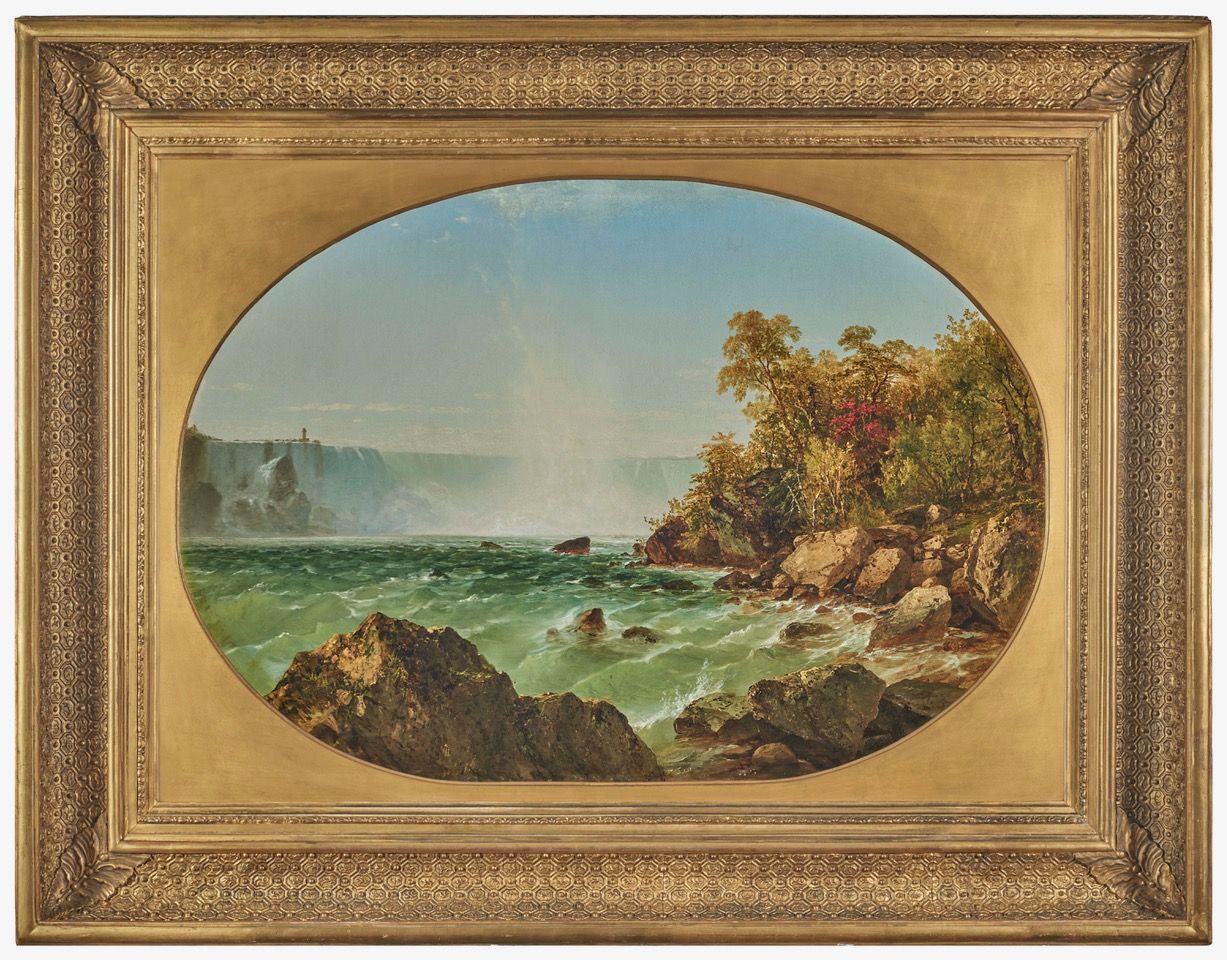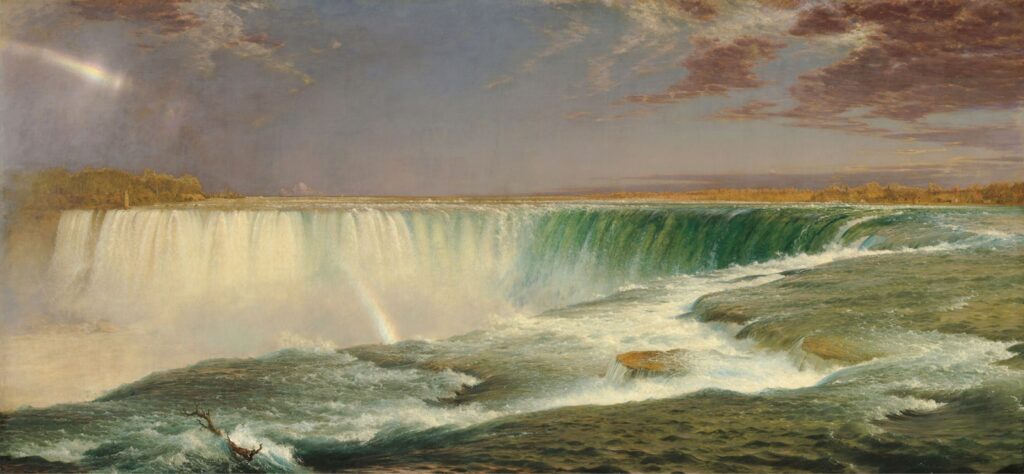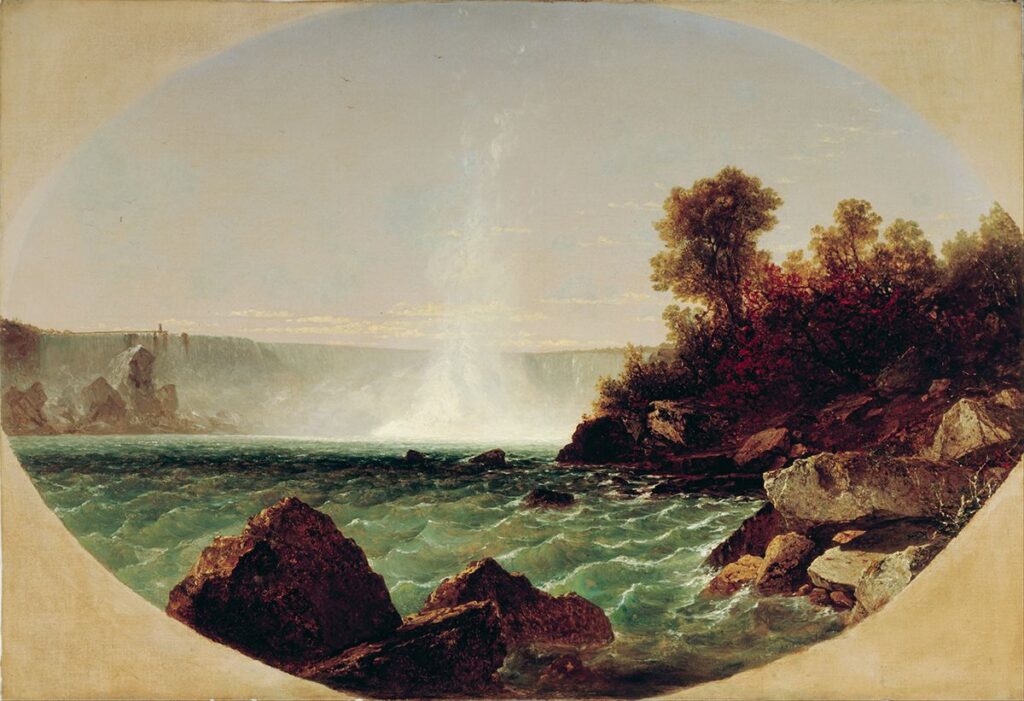John Frederick Kensett (1816–72)
A View of Niagara Falls, 1854
Oil on canvas
McMullen Museum of Art, Boston College, Gift of Alexandria & Michael N. Altman P’22, ’24, ’26 in recognition of a life of service to Boston College by William M. & Alison S. Vareika ’74, P’09, ’15, LP’16 on the occasion of William’s Fiftieth Boston College Reunion

Oliver Wunsch
Assistant Professor, Art History

Shortly after John Frederick Kensett died in 1872, a writer in the Nation recalled that the painter had taken an unusual approach to dramatic subject matter: “Such a subject as Niagara the artist treats without forsaking his calm, like a cultured elocutionist who declaims the most impassioned text, never losing his high-bred balance.”1 The comment is a useful introduction to this strangely distant view of Niagara Falls. Other painters from the time such as Frederic Edwin Church (1826–1900) highlighted the waterfall’s violent force, sometimes adopting a vantage point terrifyingly close to the precipice (see photo). Kensett, by contrast, presented a comparatively tranquil view of the waters from a protected position far downstream. The decision was consistent with Kensett’s reputation for “calm” in both his personal affect and pictorial style.2 Today, we might say that “calm” was Kensett’s “brand.” But if calm was a brand, it was a paradoxical marketing technique.
For audiences in the mid-nineteenth century, the quiet repose of Kensett’s work was the opposite of commercial, offering an antidote to the crass sensationalism of popular spectacle. Few subjects at the time were more associated with downmarket entertainment than the rushing waters of Niagara Falls—in 1853, a 1600-foot moving panorama of the Falls went on display in New York City, attracting mass audiences.3 Kensett pointedly resisted such bombast, foregrounding the gentle waves that lap at the rocky shores of the Niagara River while displacing the Falls themselves to the background, their crashing tumult veiled behind a misty haze. At a time when art collectors wished to separate their tastes from the supposedly coarse proclivities of the mass market, such aesthetic understatement became an important sign of cultural and social distinction. The critic who compared Kensett to an elocutionist who never loses “his high-bred balance” makes explicit the association between calm and social class. For Kensett, the approach paid dividends. No less noble a personage than Francis Egerton, first Earl of Ellesmere, purchased a nearly identical version of this painting in 1854 (see image; it is now in the collection of the White House).4 Ellesmere paid $500 for the work, the second highest price that any Kensett painting had garnered to that date. Anti-commercialism, it seems, had a commercial appeal.


1. “The Kensett Relics,” Nation, Mar. 20, 1873, 204.
2. Melissa Geisler Trafton, Critics, Collectors, and the Nineteenth-Century Taste for the Paintings of John Frederick Kensett (Berkeley: University of California, Press, 2003), 244–74.
3. Joseph Earl Arrington, “Godfrey N. Frankenstein’s Moving Panorama of Niagara Falls,” New York History 49, no. 2 (1968): 169–99.
4. John Paul Driscoll, “From Burin to Brush: The Development of a Painter,” in John Frederick Kensett: An American Master, ed. Susan E. Strickler (New York: Worcester Art Museum in association with Norton, 1985) 90; William Kloss, Art in the White House: A Nation’s Pride (Washington, DC : White House Historical Association, 1992), 108–9.
